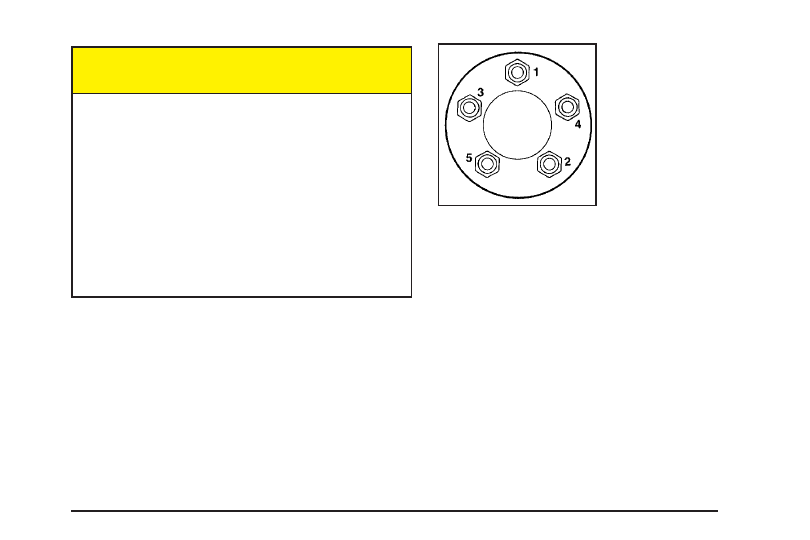Pontiac Bonneville (2005 year). Manual - part 23

{
CAUTION:
Incorrect wheel nuts or improperly tightened
wheel nuts can cause the wheel to come loose
and even come off. This could lead to an
accident. Be sure to use the correct wheel
nuts. If you have to replace them, be sure to
get new GM original equipment wheel nuts.
Stop somewhere as soon as you can and have
the nuts tightened with a torque wrench to the
proper torque specification. See Capacities
and Specifications on page 5-121 for wheel nut
torque specification.
Notice: Improperly tightened wheel nuts can lead
to brake pulsation and rotor damage. To avoid
expensive brake repairs, evenly tighten the wheel
nuts in the proper sequence and to the proper
torque specification. See Capacities and
Specifications on page 5-121 for the wheel nut
torque specification.
13. Tighten the wheel nuts
firmly in a crisscross
sequence.
Notice: Wheel covers will not fit on your compact
spare. If you try to put a wheel cover on the compact
spare, you could damage the cover or the spare.
14. Do not try to put the wheel cover on the compact
spare tire. It will not fit. Store the wheel cover in
the trunk until you have replaced the compact spare
tire with a regular tire.
When you reinstall the full size wheel and tire, you
install the wheel cover or nut caps at this point.
When reinstalling the nut caps on aluminum wheels,
tighten the caps snug with the wheel wrench. Then
continue tightening one-quarter turn for plastic caps, or
one-eighth turn for steel caps. Do not overtighten.
5-99